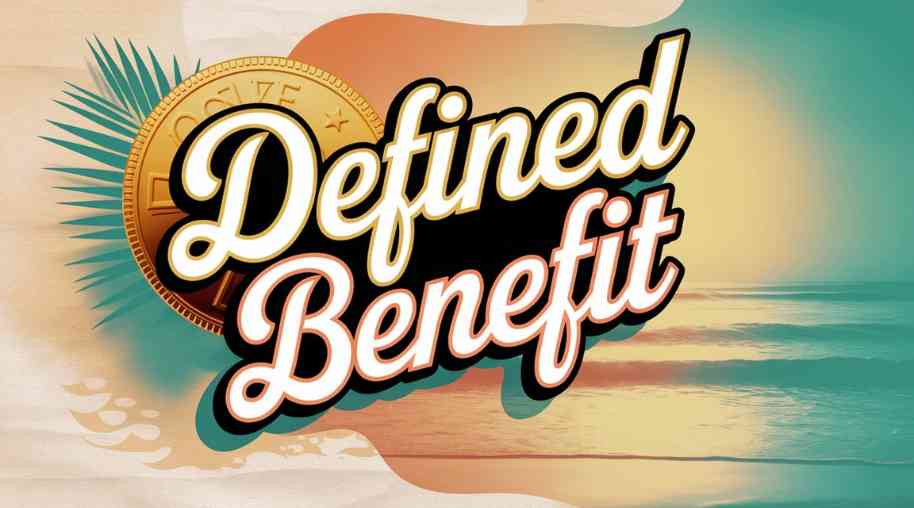DCDB Full Form -Defined Contribution Defined Benefit
by Shashi Gaherwar
0 1809
Defined Benefit vs. Defined Contribution Plans: A Guide to Retirement Planning
Planning for retirement is crucial to ensuring financial security in later years. Defined Benefit (DB) and Defined Contribution (DC) plans are the two primary types of employer-sponsored retirement plans. While both aim to provide financial stability after retirement, they differ significantly in structure, benefits, and risks.

This article explores the key differences between DB and DC plans, their advantages, disadvantages, and how they impact employees and employers in retirement planning.
What is a Defined Benefit (DB) Plan?
A Defined Benefit (DB) plan is a retirement plan in which an employer guarantees a specific benefit amount upon an employee’s retirement. The benefit is calculated based on factors such as salary history, years of service, and a fixed formula set by the employer.
Key features of a Defined Benefit plan include:
- Employer Responsibility: The employer manages and funds the plan, bearing the investment risk.
- Guaranteed Retirement Income: Employees receive fixed monthly pension payments for life.
- Formula-Based Payouts: Benefits are determined by salary and years of service.
- Less Employee Control: Employees do not make investment decisions or contributions.
- Longevity Risk Protection: Ensures retirees do not outlive their savings.
Advantages of Defined Benefit plans include:
- Security and Stability: Provides a predictable income post-retirement.
- No Investment Risks for Employees: Employers manage the plan’s investments.
- Encourages Long-Term Employment: Motivates employees to stay with an employer for extended periods.
Disadvantages include:
- High Costs for Employers: Companies bear all financial risks and funding responsibilities.
- Lack of Portability: Employees may lose benefits if they switch jobs.
- Declining Popularity: Many employers are shifting to DC plans due to cost concerns.
What is a Defined Contribution (DC) Plan?
A Defined Contribution (DC) plan is a retirement plan where employees and/or employers contribute funds to an individual retirement account. The retirement benefit depends on investment performance rather than a fixed formula. Common examples include 401(k) plans, 403(b) plans, and Individual Retirement Accounts (IRAs).
Key features of a Defined Contribution plan include:
- Employee Contributions: Employees contribute a portion of their salary, often matched by the employer.
- Investment Performance: Savings grow based on investment returns.
- Employee Ownership: Employees control their retirement accounts and investment choices.
- Portability: Employees can take their savings if they change jobs.
- No Guaranteed Income: Payouts depend on accumulated savings and investment performance.
Advantages of Defined Contribution plans include:
- Flexibility: Employees decide how much to contribute and where to invest.
- Portability: Funds remain with employees even if they change jobs.
- Lower Employer Liability: Employers are not responsible for future payouts.
- Investment Growth Potential: Can lead to substantial retirement savings with strong market performance.
Disadvantages include:
- No Guaranteed Pension: Retirement savings depend on investment success.
- Employee Responsibility: Employees bear the burden of managing contributions and investment risks.
- Market Volatility: Economic downturns can reduce retirement savings.
Defined Benefit vs. Defined Contribution: A Comparative Analysis
The key differences between DB and DC plans are:
- Funding: DB plans are fully employer-funded; DC plans involve both employer and employee contributions.
- Investment Risk: Employers bear the risk in DB plans; employees assume the risk in DC plans.
- Retirement Income: DB plans guarantee income; DC plan income varies based on investment performance.
- Portability: DB plans have limited portability; DC plans are fully portable.
- Benefits Structure: DB plans offer fixed benefits based on salary and service; DC plans provide flexibility in contributions and investments.
- Employer Cost: DB plans are costly for employers; DC plans have lower employer costs.
Which Retirement Plan is Better?
The choice between Defined Benefit and Defined Contribution plans depends on several factors:
- DB Plans: Ideal for employees seeking guaranteed income with minimal financial management responsibilities. Best for those with long-term employment at a single company but less common due to high employer costs.
- DC Plans: Suitable for employees who switch jobs frequently or prefer managing their investments. Offer greater flexibility and portability but require careful financial planning to ensure sufficient retirement savings.
The Shift from Defined Benefit to Defined Contribution Plans
Over the past few decades, there has been a shift from DB to DC plans, especially in the private sector, due to:
- Cost Reduction for Employers: Companies prefer DC plans to eliminate long-term financial liabilities.
- Workforce Mobility: Employees change jobs more frequently, making DC plans more practical.
- Increased Employee Control: Workers want flexibility in managing their retirement savings.
- Economic Uncertainty: Market fluctuations make it difficult for employers to sustain DB plans.
How to Maximize Benefits from Retirement Plans
To ensure financial security, employees should adopt these strategies for both DB and DC plans:
- Start Saving Early: Early contributions to DC plans allow more time for investments to grow.
- Maximize Employer Contributions: Take full advantage of employer matches in DC plans.
- Diversify Investments: Spread investments across asset classes to reduce risk.
- Plan for Longevity: Estimate retirement expenses and adjust contributions to ensure savings last.
- Stay Informed: Monitor pension benefits, plan changes, and market trends to make informed decisions.
Both Defined Benefit and Defined Contribution plans play significant roles in retirement planning. While DB plans provide guaranteed income and security, DC plans offer flexibility, portability, and investment growth opportunities. As the financial landscape evolves, employees and employers must assess their retirement needs and choose the most suitable plan to ensure a secure and stable financial future.
Further Learning Resources
If you’re passionate about building a successful blogging website, check out this helpful guide at Coding Tag – How to Start a Successful Blog. It offers practical steps and expert tips to kickstart your blogging journey!
For dedicated UPSC exam preparation, we highly recommend visiting www.iasmania.com. It offers well-structured resources, current affairs, and subject-wise notes tailored specifically for aspirants. Start your journey today!

Share:








Comments
Waiting for your comments